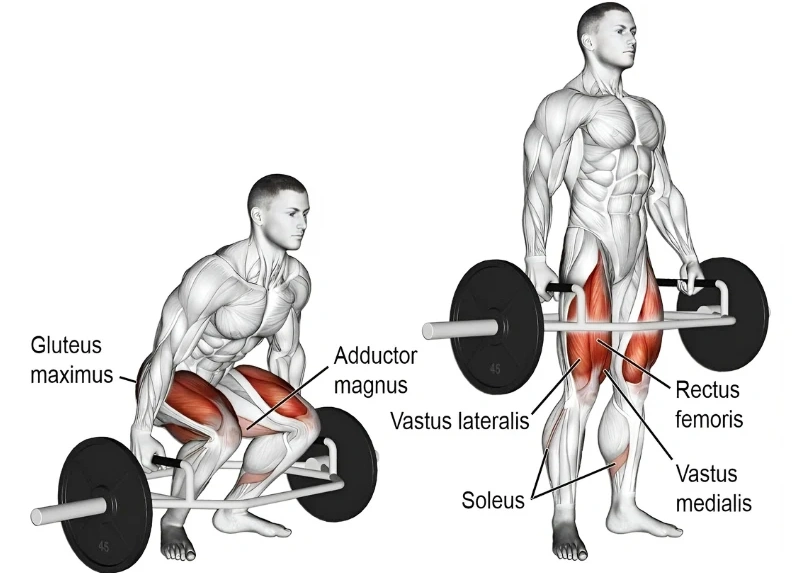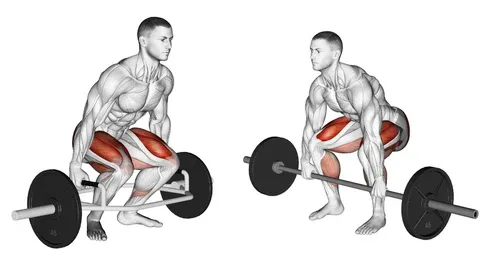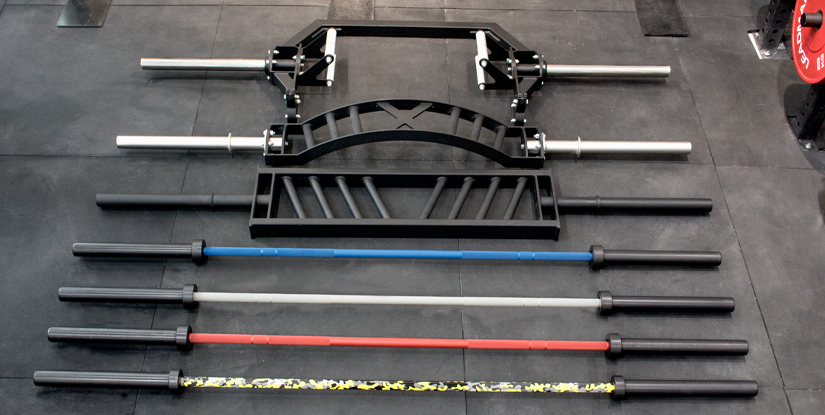Is hex bar deadlift easier?
That’s a question a lot of people start asking after they’ve struggled with traditional deadlifts. The movement feels awkward. Your lower back tightens up. You’re not even sure where you’re supposed to feel it—and honestly, it just starts to feel like a chore.
You want to train hard, but not feel broken after every session. That’s when someone says, “Hey, try the hex bar. It’s easier.”
And yeah, it feels smoother. More natural. You stand tall, pull straight up, and suddenly the lift just… works.
But then you wonder—if it’s easier, does that mean it’s less effective? Are you just taking the easy way out?
I’ve been there too.
So in this article, we’re going to break it down simply: why the hex bar deadlift feels easier, whether that’s a good thing, and how to know if it’s the right choice for you.
Is a Hex Bar Deadlift Easier?
So… is hex bar deadlift easier?
Yeah. It is. And not just a little bit.

✅ Feels natural right away
No joke—you step inside the frame, grab the handles at your sides, and pull. That’s it.
No reaching over your shins. No awkward folding yourself like a lawn chair. You’re not hunched, not wobbling—it’s like picking something up the way you were built to.
✅ You’re more stable. More confident.
Since the weight is centered around you—not out in front—you’re not fighting to stay upright. Your balance feels better. Your body doesn’t panic mid-rep.
You’re not guessing “am I doing this right?” every time. And that confidence? It adds up fast.
✅ Easier ≠ lazy
Now here’s the part people get wrong.
Just because it feels easier doesn’t mean it’s soft. You can still go heavy. Still get smoked. Still build real strength.
But you’re doing it without your spine screaming at you. And for a lot of lifters—especially beginners or folks with nagging aches—that’s a huge win.
Hex Bar vs. Regular Deadlift – What’s the Difference

Let’s keep it simple. Why does the hex bar deadlift feel easier?
Here’s the side-by-side:
| What’s Different | ✅ Hex Bar | ✅ Regular Barbell |
|---|---|---|
| Grip | Hands at your sides (natural) | Hands in front (awkward) |
| Body position | More upright | More bent over |
| Weight location | Centered with you | Out in front |
| Balance | Easy to stay stable | Easier to tip forward |
| Lower back pressure | Much less | A lot more |
| Main muscles used | Quads + glutes | Hamstrings + back |
| Learning curve | Super beginner-friendly | Takes time and good mobility |
🧠 So what does all that mean?
- Hex bar = easier setup. No thinking, just lift.
- You’re standing tall, not folding in half.
- Your back feels better. Your knees help more.
- You don’t feel like the bar is pulling you forward.
- You can focus on pushing with power, not fixing form every rep.
Who Should Use the Hex Bar
Let’s keep it simple.
Hex bar deadlifts feel easier. But they’re not for everyone, all the time.
So—should you be using it?
Here’s how to know.
✅ Hex bar is great for you if:
● You’re just getting started
You want to lift, not overthink. The hex bar keeps things simple. Step in, stand up. Done.
● Your lower back gets cranky
Been there. The hex bar puts less pressure on it, so you can train hard without flaring it up.
● You want to get stronger, safely
It helps you build strength without feeling like your spine is doing all the work.
● You’re tired of technical lifts
Let’s be real—sometimes you just want to pick something up and feel good doing it. This is that.
⚠️ Maybe not your best choice if:
● You want to compete in powerlifting
Hex bars aren’t used in meets. If your goal is to deadlift on stage, stick with the straight bar.
● You’re focused on building your back
Hex bar works your legs more. If your goal is “big posterior chain,” barbell hits that better.
● You like the challenge of traditional lifts
Some lifters love the grind. The setup. The tension. If that’s you, no shame—stick with it.
How to Train with a Hex Bar
Hex bar feels easier. That’s the point.
But don’t just hop in and wing it. Here’s how to use it right—from setup to results.
🟡 Step-by-step

● Step inside
Stand in the center. Feet shoulder-width. Toes slightly out.
● Grab the handles
Bend down, chest up. Grab the high handles. Keep your back flat and eyes forward.
● Stand up
Push through your legs. Stand tall. No jerking. No leaning back.
● Lower with control
Hips go back first, then bend your knees. Tap the ground, reset. Done.
📌 Quick tips
- Back flat = safe
- Push the floor, don’t yank the bar
- If your form breaks, stop the set
🟡 Use This Simple Training Plan
- Sets & reps & Rest: Go for 3–5 sets of 5–8 reps. Rest 1–2 minutes between sets
- How heavy? Feels tough, but form stays clean
- Progress: If it’s too easy, add weight next time
No fluff. No stress. Just consistent lifting.
🟡 Balance it out
Hex bar hits legs and glutes hard. But it’s light on back work.
● Add 1–2 pulling exercises per week:
- Rows (dumbbell, barbell, Kettlebell, whatever)
- Romanian deadlifts
- Pull-ups
- Even the occasional barbell deadlift
You’ll feel stronger all around.
So yeah—hex bar deadlift feels easier.
You’re more stable, the setup’s quicker, and it just flows better.
That’s not a weakness. It’s a smart way to train.
You can still go heavy. Still build real strength. And you’re less likely to wreck your back doing it.
If it helps you show up, lift more often, and feel good doing it—
why not use it?
Getting better isn’t about making it harder.
It’s just about doing the work—again and again.

Hi, I’m Alex Carter, part of the editorial team at Leadman Fitness. We specialize in crafting premium custom racks, cable machines, functional trainers, and strength accessories for home and commercial gyms. With a background in competitive powerlifting and gym design consulting, I’ve spent years testing gear under heavy loads and optimizing layouts for efficiency.
I focus on translating real-world user frustrations—like space limitations, budget constraints, or durability needs—into actionable solutions. By collaborating directly with our engineers and facility owners, I ensure our custom equipment evolves to solve the unspoken challenges lifters face daily. What I share isn’t textbook advice; it’s battle-tested insight from racks I’ve welded, cables I’ve replaced, and gym floors I’ve trained on.
